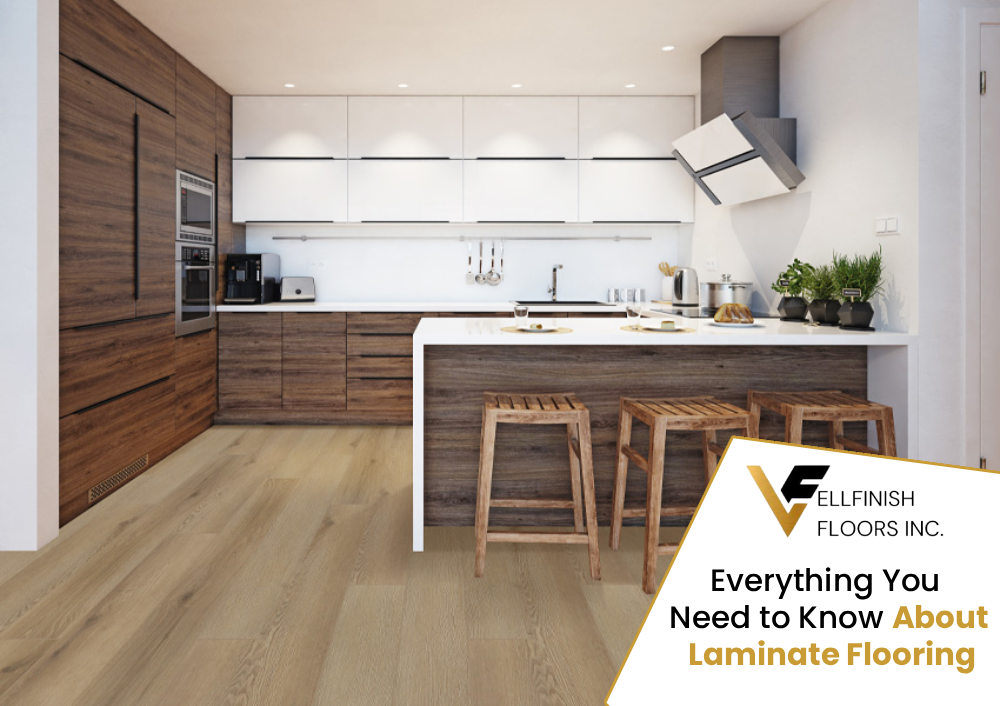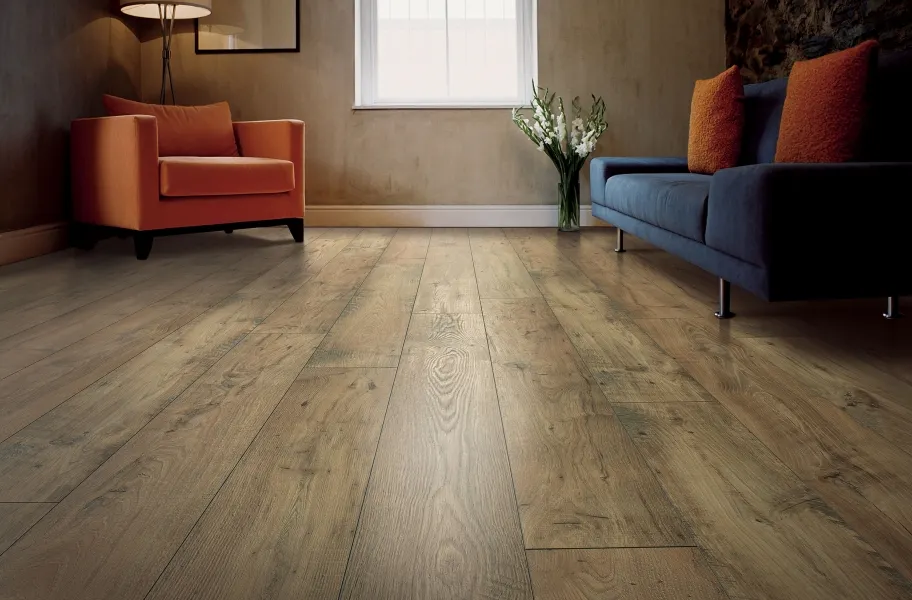Everything You Need to Know About Laminate Flooring

Laminate floors has grow to be one of the maximum famous picks for present day houses and industrial spaces. With its lovely look, durability, and fee-effectiveness, laminate gives the appropriate balance between beauty and practicality. Whether you need the look of actual hardwood, stone, or tile with out the heavy charge tag, laminate floors is a versatile alternative well worth thinking about.
This detailed manual covers everything you need to understand — from what laminate flooring is, how it’s made, kinds, durability, set up, protection, and a way to choose the proper one for your area.
What is Laminate Flooring?
Laminate floors is a multi-layer artificial floors product designed to mimic herbal substances like timber, stone, or tile. It’s far created through high-resolution printing era and topped with a obvious shielding wear layer. Due to its affordability and versatility, laminate has turn out to be a go-to desire for owners seeking out a elegant, low-protection flooring solution.
Laminate flooring is popular because it offers:
-
A realistic look and feel
-
Quick and easy installation
-
Budget-friendly pricing
-
High durability
-
Wide design choices
If you want a combination of aesthetics and performance without the high maintenance of real wood or stone, laminate flooring is an excellent option.
What is Laminate Flooring Made Of?

Laminate flooring consists of four main layers, each serving a specific purpose:
1. Wear Layer
A clear, protective layer made of aluminum oxide or melamine resin.
Purpose:
-
Protects against scratches, stains, and fading
-
Adds durability and longevity
2. Decorative Layer
A high-resolution printed image layer.
Purpose:
-
Replicates real wood, tile, or stone patterns
-
Provides texture and visual appeal
3. Core Layer
Usually made from high-density fiberboard (HDF).
Purpose:
-
Adds strength and stability
-
Provides moisture resistance (especially in water-resistant laminates)
4. Backing Layer
A stabilizing layer at the bottom.
Purpose:
-
Prevents moisture from entering from underneath
-
Helps balance the plank structure
These layers are fused together under high pressure and heat using a process called lamination — hence the name “laminate flooring.”
Is Laminate Flooring Plastic?
Laminate flooring is not fully plastic, but it does contain some plastic-based materials:
-
The wear layer is made of melamine or aluminum oxide, which are synthetic materials.
-
The decorative layer is printed on a plastic-based film.
However, the core layer, which makes up most of the plank, is made from wood fibers compressed into high-density fiberboard.
So, laminate flooring is best described as a wood-based product with protective plastic components, rather than a fully plastic flooring type like vinyl.
Types of Laminate Flooring

Laminate flooring comes in several types, categorized by installation method, surface texture, water resistance, and look.
1. Based on Installation Method
-
Click-Lock Laminate Flooring
Most popular; planks snap together without glue. -
Glue-Down Laminate Flooring
Requires adhesive; less common today. -
Pre-Attached Underlayment Laminate
Includes built-in foam padding for easy installation.
2. Based on Water Resistance
-
Standard Laminate
Suitable for dry rooms. -
Water-Resistant Laminate
Resists spills for 24–72 hours. -
Waterproof Laminate
Designed for kitchens, bathrooms, and basements.
3. Based on Thickness
Common thickness options include 7mm, 8mm, 10mm, and 12mm.
Thicker laminates feel more stable and often provide better sound insulation.
4. Based on Surface Texture
-
Smooth Finish
-
Embossed Finish
-
Hand-Scraped Texture
-
Matte or Glossy Finish
Wood-Look Laminate Flooring
Wood-look laminate flooring is the most popular category. It replicates various hardwood species with remarkable accuracy.
Common wood styles include:
-
Oak
-
Walnut
-
Maple
-
Hickory
-
Cherry
-
Pine
-
Teak
-
Grey woods for modern interiors
Using advanced printing and embossing technology, many laminates now offer synchronized textures, where the grain pattern matches the surface embossing — making it look extremely realistic.
Tile-Look Laminate Flooring
Tile-look laminate is designed to mimic stone or ceramic tiles.
Popular tile-look patterns include:
-
Marble laminate
-
Slate laminate
-
Travertine laminate
-
Concrete finish laminate
-
Ceramic tile styles
Tile-look laminate is lighter, easier to install, and more affordable than real tiles, making it ideal for kitchens, hallways, and bathrooms (water-resistant varieties).
How Durable is Laminate Flooring?
Laminate is known for its impressive durability thanks to its tough wear layer and strong HDF core.
Durability Features
-
Scratch-resistant
Perfect for homes with pets or heavy foot traffic. -
Stain-resistant
Spills can be cleaned easily. -
Fade-resistant
Sunlight exposure causes minimal fading. -
Impact-resistant
Strong enough for daily wear and tear.
AC Rating (Abrasion Class)
Laminate is graded using AC ratings from AC1 to AC6:
-
AC1 – Light residential use
-
AC2 – Medium residential use
-
AC3 – Heavy residential use
-
AC4 – Light commercial use
-
AC5 – Heavy commercial use
-
AC6 – Industrial-grade use
For most homes, AC3 or AC4 laminate is ideal.
Overall, good-quality laminate flooring can last 15–25 years or more with proper care.
Where Can You Install Laminate Flooring?
Laminate flooring is versatile and can be installed in almost any room, including:
Best Areas
-
Living rooms
-
Bedrooms
-
Dining rooms
-
Hallways
-
Offices
-
Retail spaces
Suitable with Water-Resistant Varieties
-
Kitchens
-
Laundry rooms
-
Entryways
Not Recommended (Standard Laminate)
-
Bathrooms with high moisture
-
Balconies
-
Outdoor areas
-
Areas prone to flooding
For moisture-prone areas, always choose waterproof laminate flooring.
How to Install Laminate Flooring
Laminate flooring is designed for DIY-friendly installation, especially with click-lock planks. Here’s a simple guide:
1. Prepare the Subfloor
-
Ensure the floor is clean, dry, and level.
-
Remove old carpet or tile.
-
Fix cracks or uneven spots.
2. Add Underlayment
Some laminates have pre-attached padding; others require foam underlayment.
Benefits include:
-
Sound reduction
-
Smooth foundation
-
Moisture barrier
3. Start Laying Planks
-
Begin in a corner of the room.
-
Use spacers to maintain expansion gaps (8–10mm).
-
Click and lock the planks together row by row.
-
Cut planks using a saw when needed.
4. Fit Around Doorways & Edges
-
Trim planks to fit tight spaces.
-
Install transition strips and moldings.
5. Final Steps
-
Remove spacers.
-
Clean the floor.
-
Add baseboards if required.
Professional installation is also available if you prefer a flawless finish.
Laminate Flooring Maintenance Tips
Laminate flooring is low-maintenance, but a few simple habits can extend its life:
Do’s
✔ Clean spills immediately
✔ Use a dry or slightly damp mop
✔ Place mats at entryways
✔ Use felt pads under furniture
✔ Vacuum with a soft-brush attachment
Don’ts
✘ Avoid excessive water or steam mops
✘ Do not use abrasive cleaners
✘ Do not drag heavy furniture
✘ Avoid wax or polish (laminate doesn’t need it)
Proper care will keep your laminate flooring looking new for years.
How to Choose the Right Laminate Flooring
Choosing the right laminate depends on your needs, budget, and interior style. Here’s what to consider:
1. Thickness
Thicker planks (10–12mm) offer:
-
Better sound insulation
-
More natural feel
-
Greater durability
2. AC Rating
For homes, choose AC3 or AC4.
3. Water Resistance
-
Standard laminate for dry rooms
-
Water-resistant/waterproof for kitchens and bathrooms
4. Texture and Finish
Choose from:
-
Smooth
-
Embossed
-
Hand-scraped
-
High-gloss or matte
5. Design Style
Pick a design that matches your interior theme:
-
Modern homes: grey, whitewashed, or matte textures
-
Classic homes: oak or walnut wood-look
-
Industrial style: concrete or stone-look laminates
6. Budget
Laminate flooring is available in various price ranges.
Higher-quality laminates offer:
-
Better durability
-
More realistic textures
-
Better water resistance
7. Room Size
-
Light colours make small rooms feel larger
-
Wider planks reduce visible seams
Final Thoughts
Laminate flooring is an excellent choice for anyone seeking beautiful, durable, and affordable flooring. With a huge variety of designs—from wood-look to tile-look—and advanced features like waterproofing and scratch resistance, laminate is suitable for almost every room.
Whether you’re renovating a home or upgrading a commercial space, laminate offers the perfect blend of style, strength, and simplicity. With proper installation and care, it can last for decades while maintaining its fresh, elegant look.


